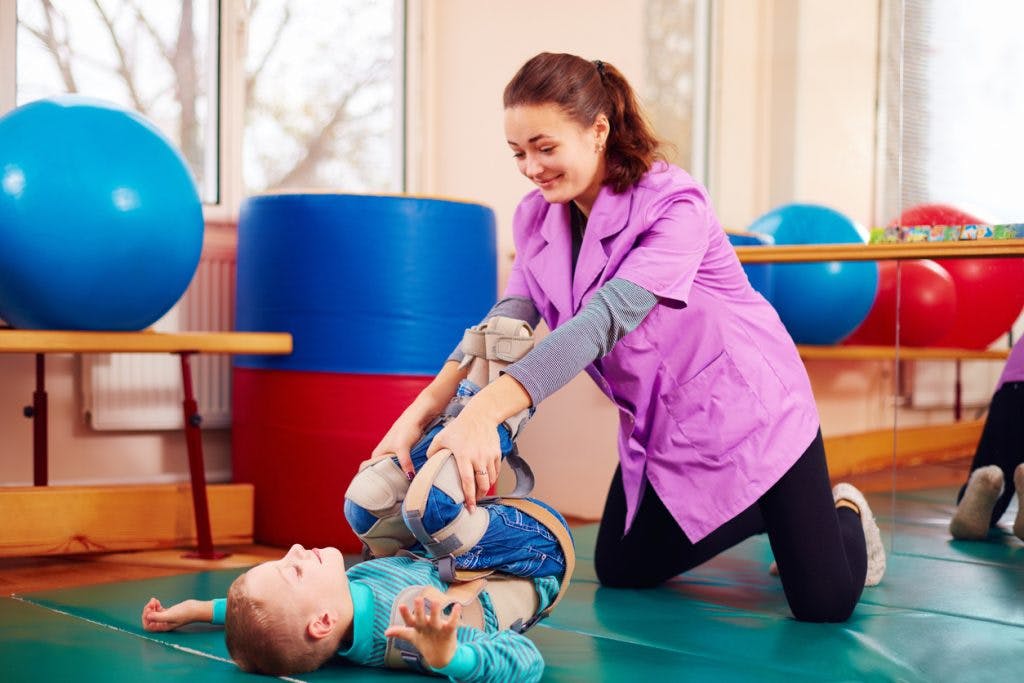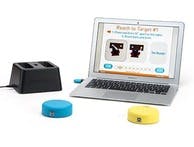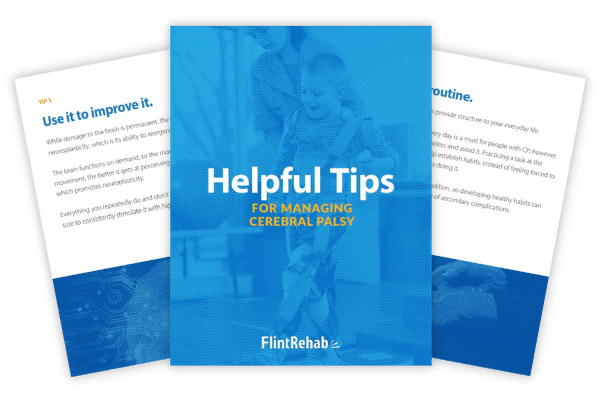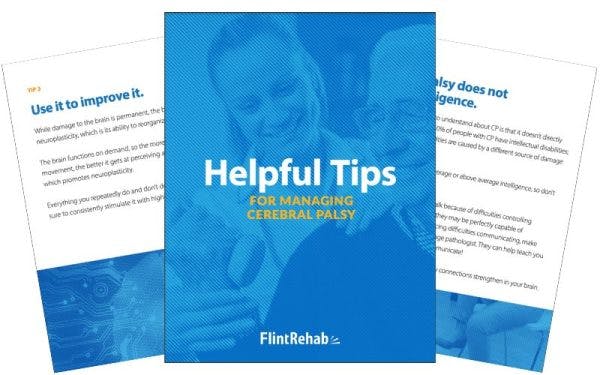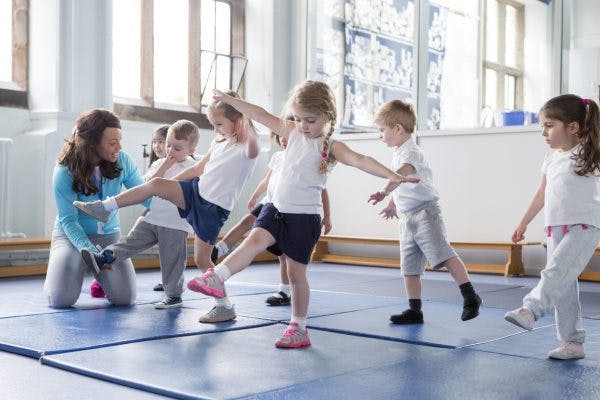Cerebral palsy affects movement and muscle control in different ways. For some, it primarily impacts the legs, while for others it may affect only one side of the body or be limited to the upper limbs. Because every case is unique, exercise plans should be tailored to each person’s needs and abilities.
In this article, we’ll explore a variety of leg exercises for individuals with cerebral palsy along with tips on how to adapt them based on your specific motor challenges.
Let’s dive in!
Jump to a section
Passive Range of Motion Leg Exercises for Cerebral Palsy
Leg Stretches for Cerebral Palsy
Leg Strengthening Exercises for Cerebral Palsy
Passive Range of Motion Leg Exercises for Cerebral Palsy
Passive range of motion (PROM) exercises involve a caregiver or physical therapist gently moving your joints through a pain-free range of motion. These exercises don’t require any active effort from you, making them ideal for individuals who have limited or no voluntary movement in their arms or legs.
PROM exercises are especially helpful for individuals with more severe forms of cerebral palsy who may not yet have control over their movements.
Benefits of passive range of motion exercises include:
- Maintaining and improving joint flexibility
- Promoting better circulation
- Stimulating muscles
- Helping prevent stiffness and contractures
Let’s take a look at some simple passive range of motion exercises that are great for individuals with cerebral palsy.
1. Knee Flexion and Extension
Lie flat on your back. Have your caregiver gently lift one leg and bend the knee toward your chest. Hold the position for a few seconds, then slowly straighten the leg back down to the resting position.
Repeat 3–5 times, then switch to the other leg.
2. Hip Rotations
While lying on your back, have your caregiver bend one knee so the foot is flat on the surface. Place one hand on your thigh and the other below your knee or calf. Gently move the bent knee in slow, circular motions making sure the movement comes from the hip joint.
Complete a few circles in one direction, then switch directions.
3. Ankle Rotations
Your caregiver should place one hand on your heel to stabilize the ankle and the other hand on the ball of your foot. From here they can gently rotate your foot in a slow clockwise motion, then reverse the movement counterclockwise. Keep the movement smooth and within a comfortable range.
Go for 3-4 full rotations both clockwise and counterclockwise.
4. Hip Abductions
While lying flat, have your caregiver gently guide one leg out to the side (away from the midline of the body) then slowly return it to the starting position. They should move your leg only until natural resistance is felt and avoid forcing the leg beyond its comfortable range.
Repeat several times and then switch legs.
Want 19 pages of CP recovery tips in PDF form? Click here to download our free illustrated ebook now (link opens a pop up for uninterrupted reading)
Leg Stretches for Cerebral Palsy
Over 75% of cerebral palsy patients have spastic cerebral palsy, which is characterized by constantly high muscle tone. The most effective leg stretches for cerebral palsy patients are going to work on gently lengthening tight muscles.
If you have limited leg control but full upper body control, we highly recommend using a resistance band to stretch your legs. You can place the band under your foot or any part of the leg and then pull with your arm to stretch the lower body.
However, if you have a little more leg control, here are several more active forms of stretching.
5. Calf Stretch
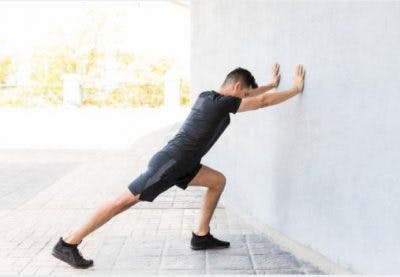
Make sure you have something sturdy nearby, such as a wall or chair, to help you stay balanced. Using that balance point, step one foot back behind you, keeping it straight, and slowly press your heel down toward the floor.
To deepen the stretch, move your back foot farther away. If the stretch feels too intense, bring your foot a bit closer to your body.
6. Butterfly Stretch

Sit on the floor with your knees bent and the soles of your feet pressed together. Now, hold your feet with both hands and gently lean your upper body forward toward them.
Be sure to keep your back straight and hinge at the hips, not the waist. You should feel a stretch along the inner thighs. To make the stretch more intense, bring your feet closer to your body. To ease the stretch, move your feet farther away.
7. Hamstring Stretch

To perform the hamstring stretch, sit on the floor with one leg straight and the other bent to the side so that the bottom of the foot is touching the inner thigh of your opposite leg.
Extend your arms out and reach towards the foot of the straight leg. Hold at the end of the stretch for around 15-30 seconds and make sure you don’t push past what’s comfortable for you.
Leg Strengthening Exercises for Cerebral Palsy
Leg strengthening exercises can help improve mobility, balance, and independence for individuals with cerebral palsy. Whether you’re working with mild or more significant motor challenges, targeted exercises can build muscle strength and support better movement control.
Below are some effective leg exercises that can be adapted to fit a range of abilities. To make any of these leg exercises more challenging, consider wearing weighted cuffs to add resistance.
8. Leg Lifts
Lay down with one leg bent and the sole of your foot against the floor. Keeping the other leg straight, slowly raise it up, hold, and then bring it back down.
To make this exercise more challenging, keep the foot in the air even when it is lowered close to the ground, but not touching the floor.
9. Seated Marching

For this exercise, sit near the edge of your chair with your feet flat on the floor. One at a time, lift each foot off the ground in an alternating motion, as if marching in place while seated.
To increase the difficulty, try lifting your knees higher with each movement.
10. Walking in a Pool

When you have decreased control in your legs, walking can be challenging. You have you sustain the weight of your body, shift your weight from side to side, and keep a steady pace.
Additionally, many children with cerebral palsy develop abnormal gait patterns due to spasticity, so developing ways to reduce spasticity and then promoting correct walking form is essential.
Walking in water has 2 properties that make it ideal for leg muscle strengthening in individuals with cerebral palsy including:
- Buoyancy is what makes you feel lighter and keeps you afloat. It helps you practice walking without all your weight pressing down on your joints. Therefore, you can focus on perfecting your form and then transition out of the water.
- Viscosity is what makes it difficult to walk quickly underwater. It helps strengthen the muscles by making you push against the water’s resistance.
However, make sure you have somebody to supervise you anytime you are doing activities in the pool.
11. Walking on Sand

Another more challenging option to strengthen your legs with cerebral palsy? Walking on the sand.
Have you ever notice how much more tiring it is to walk on sand? Well, sand is loose, so every time you take a step the pressure causes the surface beneath you to move around.
In other words, more energy is required to walk on sand because the surface is less stable.
12. Walking Uphill

Walking uphill is another great way to strengthen your legs with cerebral palsy. When you start walking on any sort of incline (like a flight of stairs or a hill), it will always going to require more energy because you have to work against gravity and lift yourself up.
The steeper the incline, the more energy you have to use for each step. Start with a smaller incline and then work your way up in both difficulty and time as you feel more comfortable.
Final Thoughts on Leg Exercises for Cerebral Palsy
Staying active can be more challenging for individuals with cerebral palsy, and progress may take time but every bit of movement matters. Regular exercise helps improve flexibility, strength, and coordination.
More importantly, repeated movement activates neuroplasticity, the brain’s ability to rewire itself and form new connections. The more consistently you practice, the more efficient these pathways become which makes movement feel easier over time.
Keep in mind: progress doesn’t have to be fast to be meaningful. Every small effort adds up. Keep moving forward just one step at a time.
Good luck!

